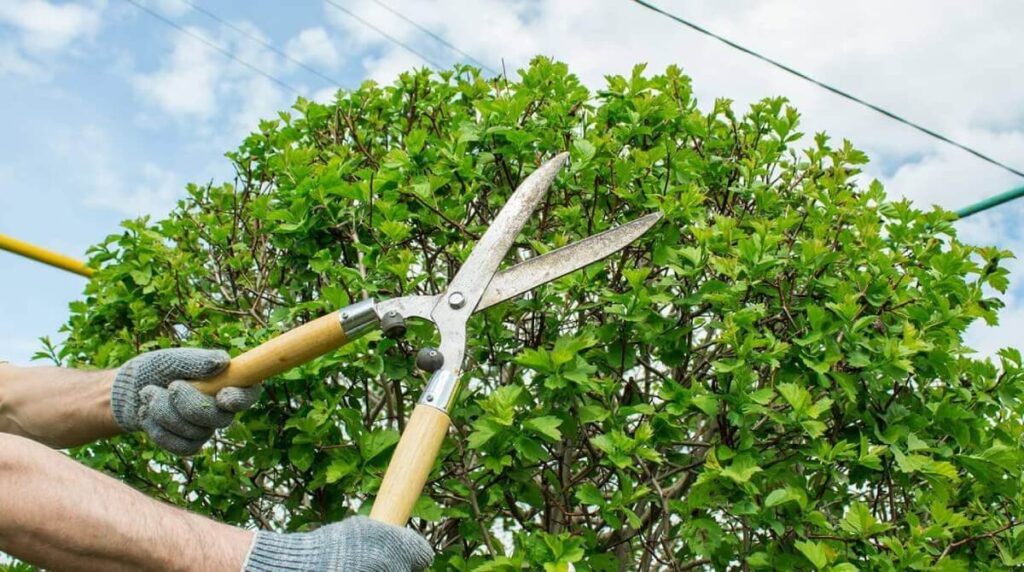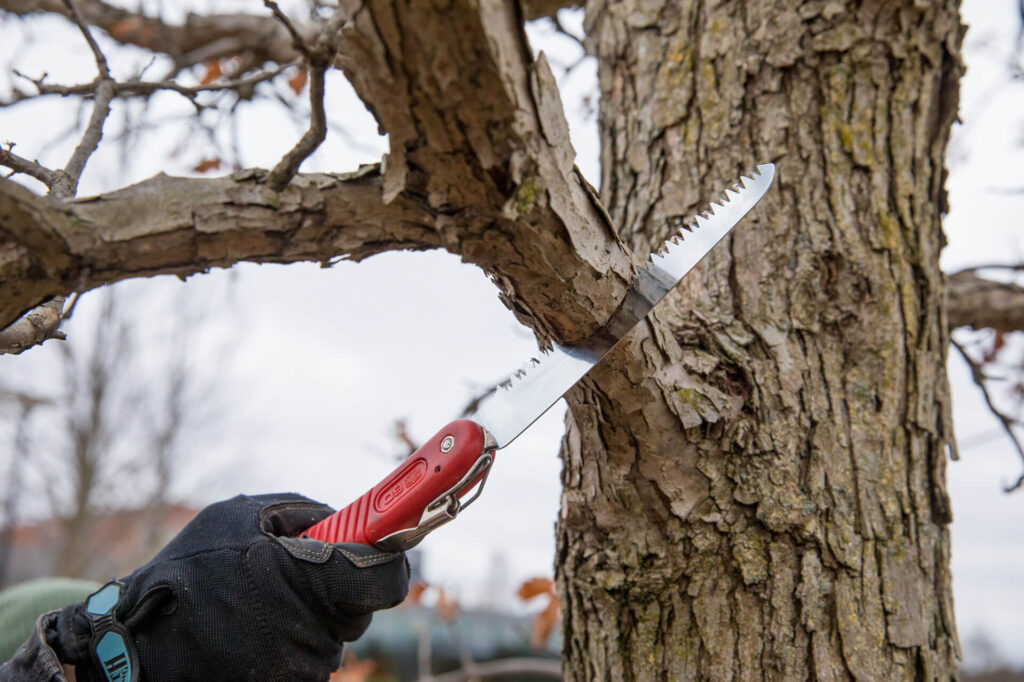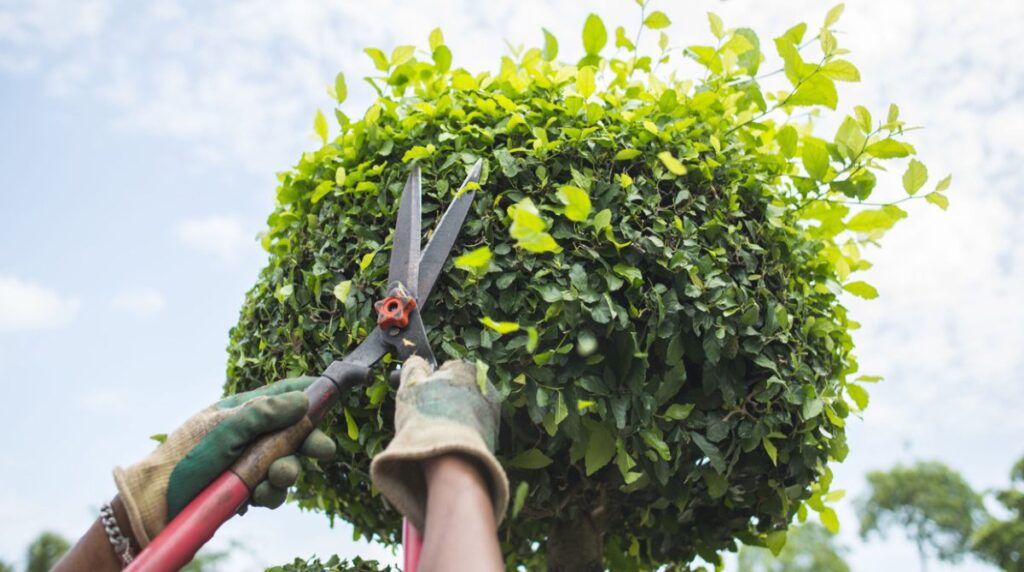Tree pruning is both an art and a science, combining technical knowledge with aesthetic considerations to achieve beautiful and healthy trees. Understanding the basics of tree pruning is essential for anyone wanting to master this craft and bring out the true potential of trees in their landscapes.
Understanding the Basics of Tree Pruning
Tree pruning is not simply about trimming branches at random. It is a deliberate and purposeful act that can have a significant impact on the overall health and appearance of a tree. One of the key reasons why tree pruning is important is to promote the growth of strong and sturdy branches.
By selectively removing certain branches, tree pruning services helps to improve the tree’s structure and reduce the risk of weak or hazardous limbs. Additionally, pruning allows for better air circulation and light penetration, creating an environment that is conducive to the tree’s overall health.
When it comes to tree pruning, there are various techniques that arborists employ to achieve the desired results. These techniques include crown thinning, crown raising, crown reduction, and selective pruning. Crown thinning involves removing a portion of smaller branches throughout the crown to increase light penetration and air movement. Crown raising, on the other hand, focuses on removing lower branches to provide clearance for pedestrians, vehicles, or structures. Crown reduction is the process of reducing the height or spread of a tree by selectively removing branches, while selective pruning involves removing specific branches to address structural issues or promote healthy growth.
Related: The Ins and Outs of Green Waste Removal

The Importance of Tree Pruning
Proper tree pruning is crucial for maintaining the long-term health and vitality of trees. Regular pruning helps to remove dead, damaged, or diseased branches, preventing the spread of infections and improving the tree’s ability to withstand adverse weather conditions. It also promotes new growth and enhances the tree’s natural shape and form.
Moreover, tree pruning can be a preventive measure to mitigate potential hazards. By carefully removing branches that pose a risk of falling or interfering with structures, pruning contributes to the safety of people and property in the surrounding area.
Another important aspect of tree pruning is the aesthetic value it brings to landscapes. Well-pruned trees can enhance the overall appearance of a property, creating a visually appealing and well-maintained environment. Whether it’s a residential garden or a public park, properly pruned trees can greatly contribute to the beauty and charm of the surroundings.
The Science Behind Tree Growth and Pruning
To understand the science behind tree pruning, it is important to delve into the biology of trees and how they respond to various pruning techniques. Trees have the ability to compartmentalize wounds, which means they can seal off or heal the areas where branches are pruned.
By strategically pruning branches at the right locations, tree pruning helps to ensure that wounds heal properly and minimize the risk of decay. Additionally, understanding the growth patterns and habits of different tree species is vital for determining the best pruning methods to achieve desired results.
Furthermore, tree pruning should be done at the right time of year to maximize its benefits. The timing of pruning can vary depending on the species of tree and the specific objectives of the pruning. For example, some trees are best pruned during their dormant season, while others may require pruning after they have flowered or produced fruit.
It is also important to consider the size and age of the tree when determining the pruning approach. Younger trees may require more frequent pruning to establish a strong structure, while older trees may need pruning to remove dead or diseased branches and maintain their overall health.
In conclusion, tree pruning is a vital practice that goes beyond simply trimming branches. It plays a crucial role in promoting the health, safety, and aesthetic appeal of trees. By understanding the science behind tree growth and employing proper pruning techniques, arborists can help trees thrive and contribute to the beauty of their surroundings.
The Artistic Side of Tree Pruning
Tree pruning is not solely driven by scientific principles. It is also an art that requires a keen sense of aesthetics. The artistic side of tree pruning involves visualizing the end result and carefully shaping the tree to enhance its beauty.
Visualizing the End Result
Before starting any pruning project, professional arborists envision how the tree will look once the pruning is complete. This visualization allows them to create a pruning plan that considers the tree’s natural shape, its surroundings, and the desired outcome.
They take into account the tree’s unique characteristics, such as its species, growth pattern, and age. By understanding these factors, arborists can determine the best approach to pruning that will bring out the tree’s inherent beauty.
Considerations for Surroundings
When it comes to tree pruning, it’s not just about the tree itself. The surrounding environment also plays a crucial role in shaping the aesthetic outcome. Professional arborists carefully assess the landscape, taking note of nearby structures, other trees, and any potential obstructions.
By considering the surroundings, arborists ensure that the pruned tree harmonizes with its environment. They take into account factors such as the tree’s position in relation to buildings or other trees, ensuring that the pruning enhances the overall visual appeal of the landscape.

Balancing Aesthetics and Health in Pruning
While aesthetics play a significant role in tree pruning, it is crucial to strike a balance between beauty and the tree’s health. Aesthetically pleasing pruning should not compromise the tree’s overall well-being. Professional arborists carefully assess the tree’s health and consider its specific needs before making any aesthetic decisions.
They evaluate the tree’s structural integrity, looking for signs of disease, decay, or structural weaknesses. By understanding the tree’s health, arborists can determine the appropriate pruning techniques that will not only enhance its aesthetics but also promote its long-term vitality.
Through skillful pruning techniques, it is possible to achieve both a visually appealing tree and one that thrives in its environment. Arborists employ various pruning methods, such as crown thinning, crown raising, and crown reduction, to achieve the desired aesthetic outcome while maintaining the tree’s health.
Furthermore, arborists take into consideration the tree’s growth patterns and future development. They anticipate how the tree will continue to grow and adjust their pruning techniques accordingly, ensuring that the tree maintains its beauty over time.
Conclusion
The artistic side of tree pruning goes beyond scientific principles. It involves a deep understanding of the tree’s natural form, its surroundings, and the balance between aesthetics and health. By combining their expertise in arboriculture with their artistic vision, professional arborists create visually stunning trees that enhance the beauty of any landscape.
Tools of the Trade: Essential Equipment for Tree Pruning
Pruning trees requires a set of essential tools designed to make the process efficient, safe, and effective. Having the right equipment ensures that pruning tasks can be carried out with precision and minimal risk to both the arborist and the tree.
When it comes to tree pruning, safety should always be the top priority. Arborists understand the importance of protective gear to shield themselves from potential hazards. Safety glasses are crucial to protect the eyes from flying debris, while gloves provide a barrier between the arborist’s hands and sharp branches. Helmets offer head protection in case of falling branches or accidental slips.
Working at height is a common aspect of tree pruning, and it requires additional safety measures. Sturdy ladders with non-slip rungs and wide bases provide stability and support, minimizing the risk of falls. Harnesses and safety ropes are employed to secure the arborist to the tree, allowing them to work confidently and safely at elevated positions.
Safety Gear for Tree Pruning
Prioritizing safety is paramount when undertaking tree pruning. Protective gear such as safety glasses, gloves, and helmets are essential to shield the arborist from potential hazards. Additionally, using sturdy ladders and harnesses when working at height helps prevent falls and injuries.
Aside from safety gear, arborists also rely on cutting tools specifically designed for different pruning tasks. Pruning shears, also known as secateurs, are a staple tool for arborists. These handheld shears are perfect for precision cuts on smaller branches, allowing the arborist to remove dead or diseased wood with ease.
For larger branches, pruning saws or chainsaws are the go-to tools. These powerful cutting instruments enable arborists to make clean and proper cuts, promoting optimal healing for the tree. Pruning saws come in various sizes and designs, with some featuring curved blades for better maneuverability in tight spaces. Chainsaws, on the other hand, are ideal for larger branches that require more force to cut through.
The choice of cutting tool depends on the size and type of branches being pruned, and professional arborists are well-versed in selecting the appropriate tool for each specific job. They understand the importance of using the right tool to ensure efficient and effective pruning, minimizing any negative impact on the tree’s health.
Cutting Tools for Different Pruning Tasks
Arborists rely on a variety of cutting tools for different pruning tasks. Pruning shears, also known as secateurs, are used for precision cuts on smaller branches. For larger branches, pruning saws or chainsaws are utilized, ensuring clean and proper cuts that promote optimal healing.
The choice of cutting tool depends on the size and type of branches being pruned, and professional arborists are well-versed in selecting the appropriate tool for each specific job.

Techniques for Professional Tree Pruning
Professional tree pruning requires using proven techniques that address the needs of the tree while achieving desired outcomes. By understanding and applying these techniques, arborists can ensure that pruning promotes tree health, structure, and aesthetics.
Pruning for Tree Health
Pruning for tree health involves removing dead, diseased, or damaged branches to prevent the spread of pathogens and promote the tree’s natural defense mechanisms. Thinning the crown of the tree can improve air circulation and sunlight penetration, creating an environment that discourages the growth of fungal diseases.
Additionally, selective pruning can redirect the tree’s energy to healthier branches, giving them room to grow and flourish.
Pruning for Tree Shape and Structure
Tree pruning can also be done to influence the shape and structure of the tree. This is particularly important when dealing with young trees, as early pruning helps establish the desired shape and form as they mature.
Selective branch removal and pruning cuts can help shape the tree’s crown, resulting in a well-balanced and aesthetically pleasing silhouette. This is an art form that requires precision and careful consideration of how the tree will grow and develop over time.
The Timing of Tree Pruning
Timing is critical when it comes to tree pruning. The right timing ensures that the tree’s natural growth cycles are not disrupted and maximizes the benefits of pruning.
Seasonal Considerations for Pruning
Different tree species have varying optimal pruning seasons. For most trees, winter is the ideal time for pruning, as it allows the tree to focus on healing without the added stress of new growth. However, there are exceptions, such as spring-flowering trees, which should be pruned immediately after flowering to avoid cutting off potential blooms.
Professional arborists understand the specific requirements of each tree species and carefully time their pruning efforts accordingly.
Pruning in Response to Tree Diseases and Pests
In some cases, tree pruning becomes necessary in response to diseases or pests. When a tree is infected or infested, targeted pruning can remove affected branches and prevent further spread of the problem. Pruning can also provide access for pest control treatments and enhance the tree’s ability to recover.
Working in conjunction with other appropriate treatments, professional arborists can help mitigate the impact of diseases and pests through strategic pruning.
In conclusion, the art and science of professional tree pruning are intertwined, blending technical knowledge with creative vision. Understanding the importance of tree pruning, the science behind growth and pruning, and the various techniques and timing involved enables arborists to shape beauty in our landscapes and promote the long-term health of trees.
